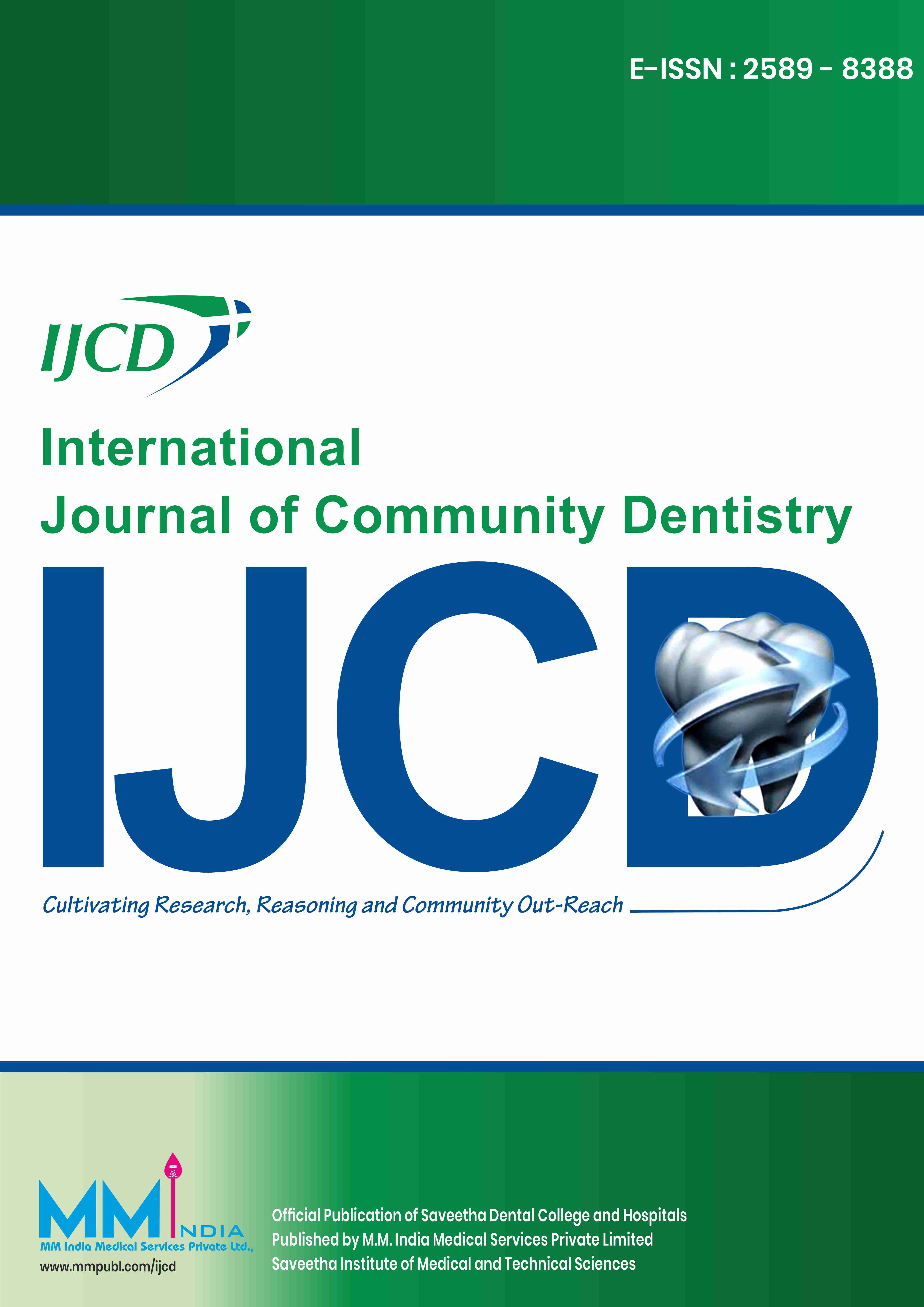PEPTIDES IN REMINERALISATION - A REVIEW
DOI:
https://doi.org/10.56501/intjcommunitydent.v10i1.48Keywords:
Dental Caries, Peptides, RemineralizationAbstract
Caries develops when the remineralization and demineralization equilibriums are out of balance. When the demineralization level exceeds 30%, the enamel suffers irreversible damage. As a result, non-invasive techniques for early detection and management of these reversible incipient lesions are recommended.Fluorides are the most important and effective, and their local efficacy has been widely researched. Many new innovations have been introduced for remineralisation of early lesion, such as ACP-CPP, Self-assembling peptides , etc., CPP–ACP is a milk product that aids in remineralization and dental caries prevention. Amorphous calcium phosphate is delivered by casein phosphopeptide, which also aids ACP binding to dental enamel. The natural amino acids Glutamine, Glutamic acid, Phenylalanine, Tryptophan, Serine, and Arginine make up the self-assembling peptide P11-4, which is intended to form brils at low pH and to be monomeric at higher pH. Furthermore, studies to be conducted to learn about the mechanism of Self assembling peptides.
References
Tecilla P, Dixon RP, Slobodkin G, Alavi DS, Waldeck DH, Hamilton AD. Hydrogenbonding self-assembly of multichromophore structures. Journal of the American Chemical Society. 1990 Dec;112(25):9408-10.
Subramani K, Ahmed W. Self-Assembly of Proteins and Peptides and Their Applications in Bionanotechnology and Dentistry. InEmerging Nanotechnologies in Dentistry 2012 (pp. 209-224).

Downloads
Published
How to Cite
Issue
Section
License
Copyright (c) 2022 Arungani NS , Kalaivani Venkadessan

This work is licensed under a Creative Commons Attribution-NonCommercial 4.0 International License.



